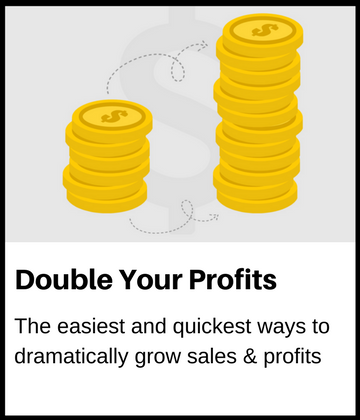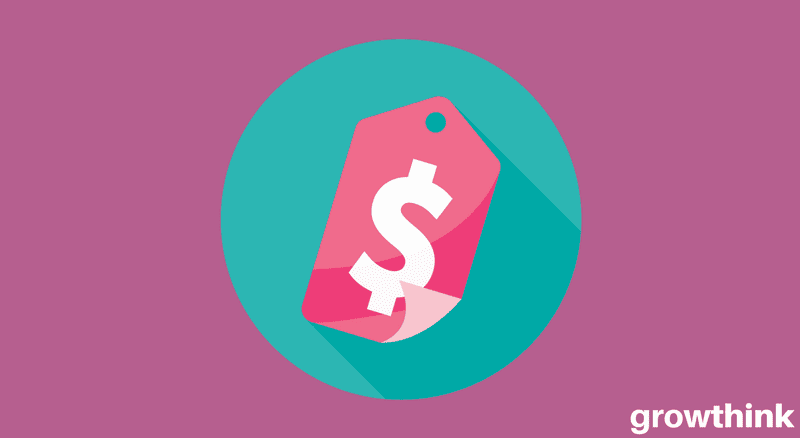Normally, if I were to ask an entrepreneur or business owner how they could double their sales, they’d propose increasing their sales force, trying to get customers to buy twice as much, or doubling their advertising budget.
But often, a superior strategy can get the same results with less effort. In this case, your pricing strategy might be this superior strategy.
There are several pricing strategies to choose from when offering a new product/service or trying something new with one you’re already selling.
Price Testing
Making even minor price changes to find the “sweet spot” where the most people will buy can massively increase your results. Think back to economics class, when they covered the Price Elasticity of Demand. Now, if you’re still awake, remember how you might raise your product’s price down or up and lead to an increase in sales.
Price it too high, and your margins will be great, but you’ll generate less revenue because fewer people buy it. Don’t price your product too low, for obvious reasons, but don’t be afraid to try going lower (even temporarily, like during a promotion) and observe the results.
Test this enough and you’ll find the sweet spot that works the best for customers and your bottom line.
Other Considerations
Changing your price (and therefore the number of units you sell) can affect your other expenses, so take these into consideration and work it to your advantage.
For example, say you lower the price of your widgets and sell many more of them. You have more sales, but the cost to create and deliver your widget stays the same (meaning lower margins on each widget sold).
This would be a great time to negotiate a volume discount with your vendors and suppliers, since you are bringing them more business. Then your customers get a lower price, you make and keep more revenue, and the vendor does more volume-everybody wins.
Another key consideration is your customers’ perception of your product-or, more importantly, how you want it to be perceived. If you price a premium item too low, customers may not believe the quality is good enough. They are accustomed to paying more to get more-and trust me, this is not necessarily a belief you need to go about changing.
On the other hand, if you price something too high, customers will go elsewhere to buy it for less, unless it has something very unique and beneficial.
Some additional pricing strategies to consider are …
Based on Competition
With this strategy, you’ll need to gather the top competitors’ prices to use as a starting point.
Determine if they are positioning their products to be on the low end, high end, or right in the middle, and compare that with your own positioning strategy. Also assess whether their product or service is of higher or lower quality than yours?
Consider market trends and your product or service’s value, and either price it a little under or a little over that of your competition. Having one or two advantages over the competition can lead to more sales, especially when the price is near the same as those with fewer benefits.
Based on Cost, Plus Markup
In this strategy, you determine your product or service’s costs to create and fulfill, and then choose a price above this amount based on the gross profit you want to make when selling each item.
Loss Leaders
Loss leaders are products or services that you offer at or below your cost, in order to attract more first-time customers who you hope will buy higher-ticket items or a variety of items over time.
The hardest sale to make is the first one, so sometimes it’s wise to make the offer so irresistible (by undercutting the competition) that you get to start a relationship with more new people-knowing that you’ll recoup your money in the future.
My advice is to also have a plan for what you will upsell them, when, and how. Ideally, it will be as soon after the time of the first purchase (or perhaps as an upsell or cross-sell at the same time as the first transaction), so your cash flow is not affected as much.
Higher Perceived Value
Some products come out of the gate with higher prices, to take advantage of the premium image and psychological positioning. Make sure the quality really is high when you do this, though it doesn’t have to be the absolute best product on the market.
Make sure you don’t arbitrarily raise the price of your existing products, because people will note the change and not see the justification for it.
Closeout prices
Also called “liquidation sales,” you can try this strategy when you have excess inventory. Your goal here isn’t to generate the most profit-it’s to minimize your costs of continuing to store the items, or throw them away. Though it isn’t a long-term strategy, it can get you out of a cash flow crunch when needed and/or clear out old inventory.
Quantity discounts
This is a way to reward people for making larger purchases from you. Offer discounts on bulk purchases, such as “Buy two, get one free.” Or, make special deals with the repeat customers who bring you the most volume.
Bundling discounts
Like the above, but applicable when a customer buys several different products from you-not several of the same ones. You can offer these bundles and their pricing at the time of the sale to sweeten the deal, or you can make it the focus of a marketing campaign.
Some speakers and trainers package together a group of related books, courses, and seminars so that the total price if you buy now is much less than getting them all separately, or at different times. It’s a great way to build urgency into your offer, if customers know they’ll have to act now to get the savings.
Versioning
You see this pricing technique used often with services, or technical products like software and apps. With this, you sell the same product in two or three different versions. The trial version (often called Basic) is usually priced very low or is even free. Think of it as the loss leader that gets people in the door and wanting to expand to the full functionality that it offers (often called the Premium, or Gold/Platinum version).
You would then offer upgrades or additional features and services at a higher price. A good example of this would be Tom’s Planner-a simple online software for making charts to schedule project-related tasks. You can create one chart with the free version (I used it to make a few charts, one at a time) or upgrade to the paid version where you can make unlimited charts. Think about how you might apply this to your products and services-especially the ones with monthly, recurring income.
So there you have it — eight proven pricing strategies at your disposal. Make smart use of these pricing strategies and your bottom line will soar!
How to Double Your Profits
Struggling to increase your income?
The “trick” to grow your profits is to make tiny improvements to multiple areas of your business, at once… if you do that, doubling your profits is easier than you think.
Click here to double your profits today.



